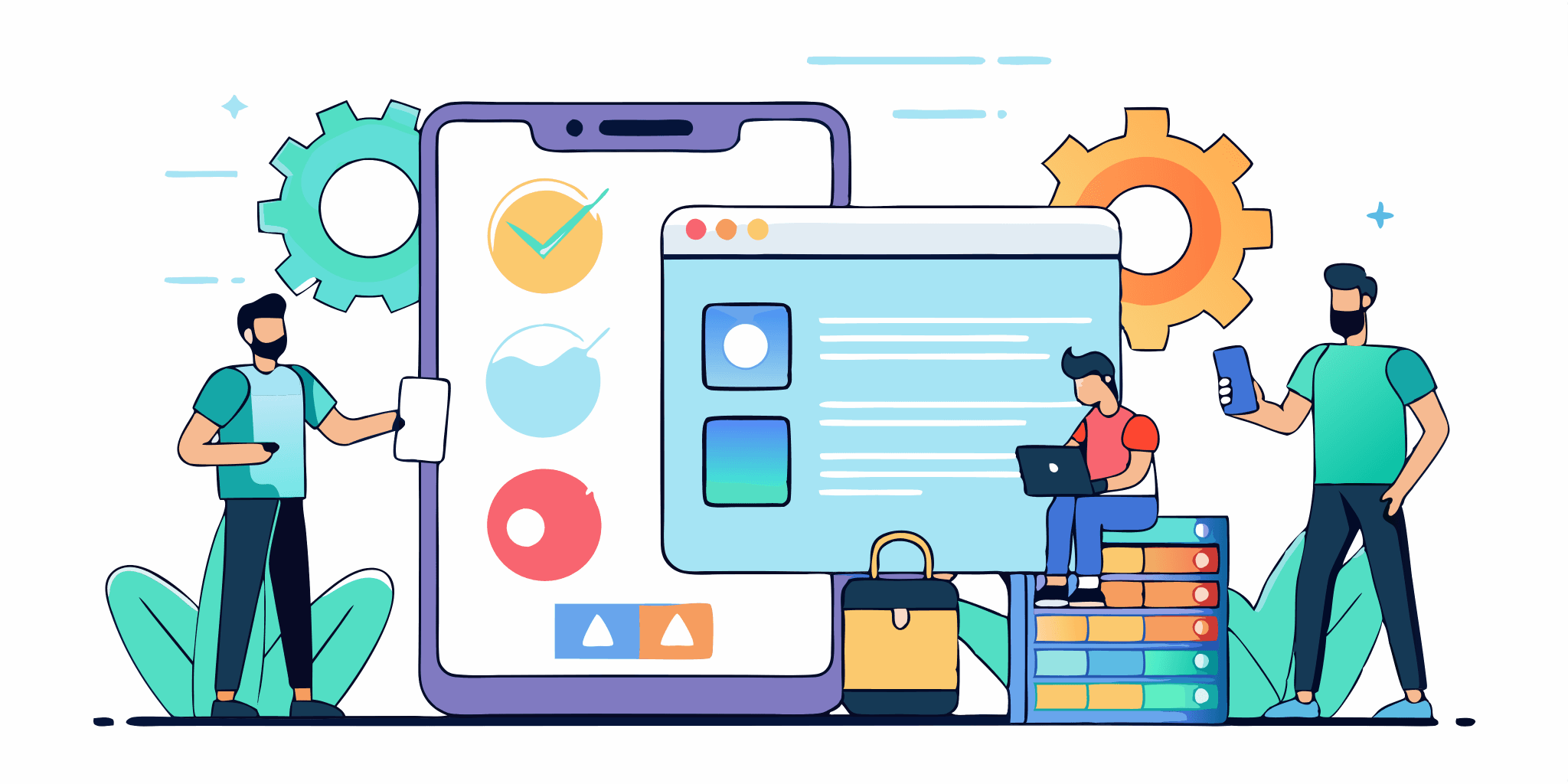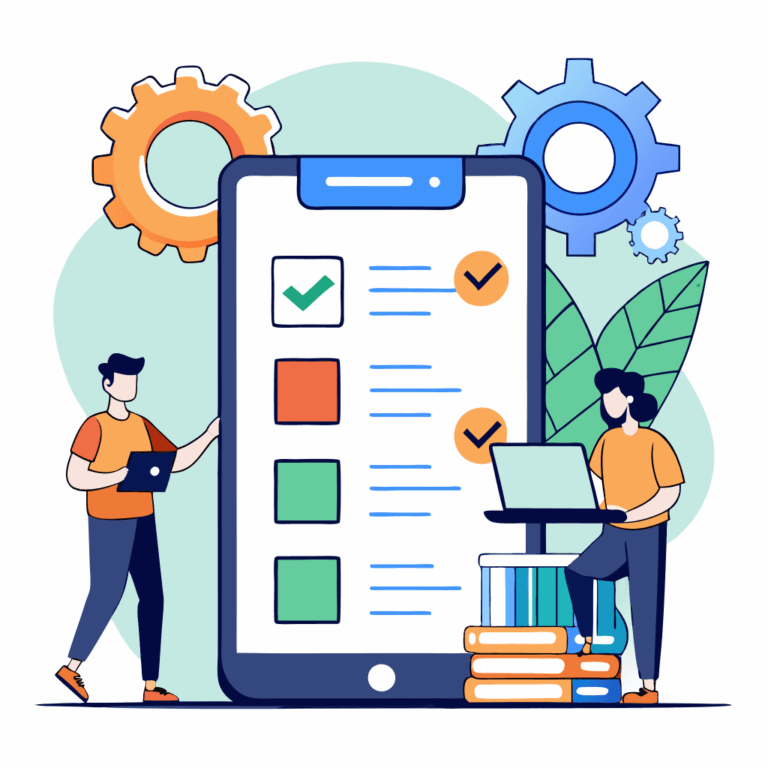

App Development
The Art and Science of App Development
App development has emerged as one of the most in-demand professions and sectors in the current digital era. Mobile and online applications are transforming how we communicate, work, and do business, from social media sites and game apps to productivity aids and e-commerce solutions. However, what is the process of developing a successful application, and what is app development exactly? Let’s explore the intriguing field of app development in more detail.
Understanding App Development
App development is the process of creating, developing, and managing applications for online platforms or mobile devices (iOS and Android). The brainstorming, planning, designing, coding, testing, and deployment phases are all part of the development process. Understanding these phases is essential to creating useful and intuitive apps, regardless of your level of experience as a developer.
Types of Apps
There are several types of applications based on their functionality and the technology used to build them:
Native Apps
Built specifically for a single platform (iOS or Android) using platform-specific programming languages like Swift (iOS) or Kotlin/Java (Android).
Hybrid Apps
A combination of web and native apps, developed using frameworks like React Native, Flutter, or Ionic
Web Apps
Responsive applications that run in a web browser and do not require installation, such as Progressive Web Apps (PWAs).
Cross-Platform Apps
Apps developed using a single codebase for multiple platforms using tools like Xamarin, Flutter, or React Native.
The Process of Developing Apps
Planning & Research
Every successful software begins with a carefully thought-out concept. Important stages in this phase include determining the target audience, outlining essential features, and researching rivals. A clear plan guarantees a seamless development process and helps prevent expensive errors.
UI/UX Design
An app’s usability and appeal are greatly influenced by its user interface (UI) and user experience (UX) design. For wireframing and prototyping, programs like Figma, Adobe XD, and Sketch are frequently utilised. In addition to drawing users in, a well-designed app increases engagement and retention rates.
3. Development & Coding
Actual coding and feature integration are part of this step. Depending on the kind of app being created, developers utilise a variety of programming languages, including Swift, Kotlin, Java, Dart, or JavaScript. Additionally important is backend development, which manages server-side logic, user authentication, and data storage. The scalability and performance of the app might be affected by the development stack selection.
4. Testing & Debugging
Thorough testing is necessary before an app is released in order to find and address bugs. Unit testing, performance testing, and user acceptability testing are among the several forms of testing carried out by quality assurance (QA) engineers. This procedure is streamlined and the app’s compatibility across many devices and operating systems is guaranteed using automated testing technologies like Selenium, Appium, and TestComplete.
5. Deployment & Maintenance
Once tested, the app is deployed on platforms like the Apple App Store or Google Play Store. This process involves meeting platform-specific guidelines and obtaining necessary approvals. After launch, continuous maintenance, bug fixes, performance optimization, and feature enhancements ensure long-term success. User feedback plays a crucial role in improving the app’s functionality over time.
Tools & Technologies in App Development
App development is powered by various tools and frameworks, including:
- Programming Languages – Swift, Kotlin, Java, Dart, JavaScript, Python
- Development Frameworks – React Native, Flutter, Xamarin
- Database Management – Firebase, MySQL, MongoDB
- Cloud Services – AWS, Google Cloud, Azure
- DevOps & CI/CD Tools – GitHub Actions, Jenkins, Docker, Kubernetes
The Future of App Development
The development of apps is expected to grow significantly as AI, machine learning, and 5G technology advance. New developments like blockchain integration, augmented reality (AR), and virtual reality (VR) are changing how apps work and benefit consumers. Predictive analytics, voice assistants, and chatbots driven by AI are quickly becoming indispensable features of contemporary software.
Low-code and no-code development platforms are another exciting technology that makes it possible for people without programming experience to create useful applications. For small firms and entrepreneurs, these tools—like Bubble, OutSystems, and Adalo—are creating new opportunities.
Developers are concentrating on encryption, multi-factor authentication, and adherence to laws like the CCPA and GDPR as security and data protection become increasingly important. Developers are using edge computing to improve app speed and lower latency as mobile devices get more capable.
In conclusion
The exciting and fulfilling industry of app development blends technological know-how with creativity. Success depends on keeping up with the newest trends and technology, whether you’re a developer polishing your craft or an entrepreneur hoping to create an app for your company. The market for top-notch apps is expanding, making it a profitable sector for both enterprises and experts.
Anyone may create cutting-edge, life-changing applications by adhering to best practices, utilising the appropriate resources, and never stopping learning. The potential for app creation is endless as technology develops, influencing digital experiences in novel and exciting ways for the future.


FAQ
Aksked & Question
The specific goals of a marketing agency can vary depending on the client's needs, industry.
1. What services does your agency offer?
Provide an overview of the primary digital services your agency specializes in, such as digital marketing, web development, design, etc. Feel free to customize these based on the specific services, policies, and practices.
2. What industries does your agency work with?
Provide an overview of the primary digital services your agency specializes in, such as digital marketing, web development, design, etc. Feel free to customize these based on the specific services, policies, and practices.
3. What sets your agency apart from others in the industry?
Provide an overview of the primary digital services your agency specializes in, such as digital marketing, web development, design, etc. Feel free to customize these based on the specific services, policies, and practices.
4. What is your pricing structure or payment process?
Provide an overview of the primary digital services your agency specializes in, such as digital marketing, web development, design, etc. Feel free to customize these based on the specific services, policies, and practices.

